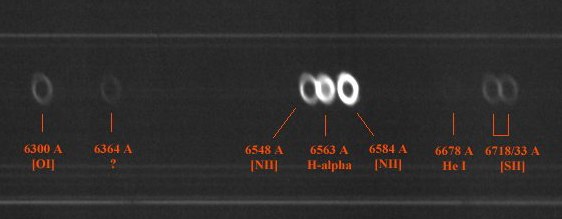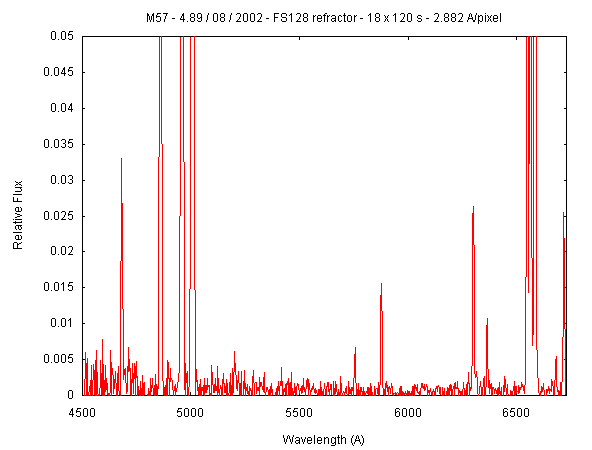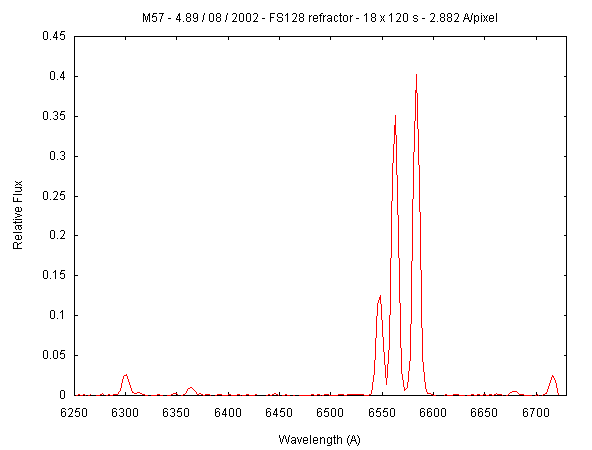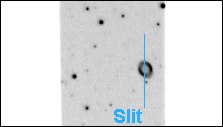
The image shows the field of planetary nebula NGC 2392 (the Clown nebula) captured with a Jeulin grating (100 lines/mm) placed 21 mm in front ot the surface of KAF-0400 CCD equipping the Audine camera (slitless spectrograph configuration). The telescope is a flat-field camera of 190 mm at F/D=4. The final image represents a stack of ten 2 minutes exposures. The zero order of this one is just on the right center of the image (one may guess the nebular glow). Notice that each star has a spectrum associated. The nebula spectrum is complex: one sees at the same time the spectrum of the central star which is of magnitude 9 approximately and several monochromatic images of the nebula which are superimposed on it. The Jeulin grating concentrates approximately 50% of the signal in the order #0, 40% in the order #1 and 10% in the other orders.
The following figure presents the
spectral profile of NGC 2392 extracted from the preceding image.
The lines [ OIII ] at 5007 angstroms and Ha at 6563 angstroms
are particularly intense. The spectrum shows in fact monochromatic
images of the nebula (the "continuum" spectrum of its
central star is also visible). The hole in the lines is explained
well if one remembers that nebula is a ring and that spectral profile
pass roughly by its center.

Spectral
profile of nebula NGC 2392.













